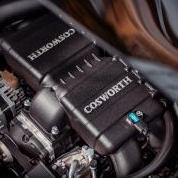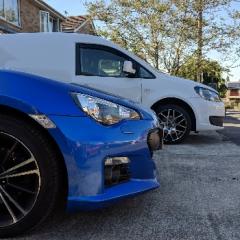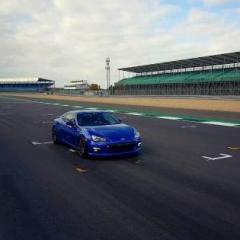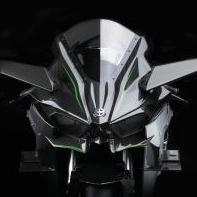-
Content Count
1298 -
Joined
-
Last visited
-
Days Won
13
Reputation Activity
-
 Church got a reaction from Subota Boy in Puncture repair kit
Church got a reaction from Subota Boy in Puncture repair kit
My advise is to throw out that sealant kit, at most only keep compressor.
1) most tire repair shops refuse to deal/repair tires with that gunk used on,
2) that kit won't help with all puncture types, so i wouldn't call it something that i can 100% rely on,
3) very probably you'll have to buy at least two new tires for tires of same wear to be on axle (at least that's what i'd try to at least in rear, due LSD diff), but if punctured tire without that crap used on is brought to tire shop, it often can be repaired for relatively cheap and it will be of same wear as rest of tires on car.
Imho full sized spare also has it's cons, eg. it's extra weight, and also robs space from already small boot, due sticking out
So .. i'd just spend more time trying to find spacesaver that does fit over BBK. For example here and here, spacesaver that fits over performancepackage brembos, P/N 28151FE030 (+foam spacer 97046CA000 (under wheel), +foam insert 95086CA070 (different from smaller non-PP insert), and just tire P/N 28121VA050 T145/70D17).
Here i found for example 18" spacesaver of 5x100 pcd. Maybe it also can provide better brake clearance. If nothing else, then with spacer.
-
 Church got a reaction from Notaricer in Recommendations on brake pads?
Church got a reaction from Notaricer in Recommendations on brake pads?
Worth always specifying also _which_ exactly pads. Most vendors have many pads covering most niches, from street to hardcore motorsport use. Comparing by generic brand name will just make apples to oranges comparison. For example Ferrodo has also real track pads like Dsuno, Ds1.11, Ds3.12. It also has also oem-ish, completely non-tracking even least stuff. For example, here chart of some hawk pads. I'm sure that different PFC pads are, well, different enough too, and thus one should always tell which.
-
 Church got a reaction from Tom21 in Recommendations on brake pads?
Church got a reaction from Tom21 in Recommendations on brake pads?
No coating will help if one uses brakes as they should, especially if tracking car. Though that is good too from other POV, rust on rotors doesn't matter too, as few hard braking will clean it off via abrazing as it will coating.
I just wrote off non-dusting as "nice to have" but of less importance among miscellaneous pad properties. To me most important bits are for main function, braking that is, working reliably well wherever i use those pads (and if it's hybrid pads we are talking about, - then both for daily driving and track), and for them to not squeal loud. Later would annoy me much more then dusting, if i had to suffer that at each traffic light stop. Availability, price, not too aggressive to rotors, and for dust to not be chemically agressive to wheels also would matter to me more then dust itself.
So by my priorities DS2500 did well, and i could live with worse dusting.
-
 Church got a reaction from SimonB95 in Recommendations on brake pads?
Church got a reaction from SimonB95 in Recommendations on brake pads?
These are not exactly performance (if under that term you think - "track") pads, more of oem+. As in they are obviously better then stock on track (rather easy to overheat/glaze), but i'd still keep track sessions to eg. 15min. And also change brake fluid to higher temp one. Then again most "real" track oriented pads are close to unusable for daily driving unlike these. As most track pads working temp range is much higher, they often have less brake friction when cold until heated up, and also with light braking that is more common in daily driving, bedded layer with track pads soon scrubs off rotors .. and one becomes idiot with loud squealing brakes each time one brakes. Yes, one can again go outside city and do several acceleration/heavy braking cycles to rebed brakes for few days, as bedded rotors with transferred layer from heated pads onto rotor should quieten most brakes, but it's PITA.
Best choice possible is to have two specialized pads sets for both daily driving & track and switch prior/post track day, but well, if one decides against such and uses one set all the time, of course there will be some compromises/limitations to keep in mind.
I tracked on DS2500, and for those 15min they mostly held up fine (on a bit grippier tires then primacies, eg. 215 to 225 wide PSS/PS4), rather consistent brake feel from cold to hot, it's when i kept driving more to 20min i start feeling fade. But as after 15min i also started to loose concentration and wear down myself, see no biggie in driving off for cigarette, coffee .. and brake cooling at that time :).
-
 Church got a reaction from SimonB95 in Recommendations on brake pads?
Church got a reaction from SimonB95 in Recommendations on brake pads?
These are not exactly performance (if under that term you think - "track") pads, more of oem+. As in they are obviously better then stock on track (rather easy to overheat/glaze), but i'd still keep track sessions to eg. 15min. And also change brake fluid to higher temp one. Then again most "real" track oriented pads are close to unusable for daily driving unlike these. As most track pads working temp range is much higher, they often have less brake friction when cold until heated up, and also with light braking that is more common in daily driving, bedded layer with track pads soon scrubs off rotors .. and one becomes idiot with loud squealing brakes each time one brakes. Yes, one can again go outside city and do several acceleration/heavy braking cycles to rebed brakes for few days, as bedded rotors with transferred layer from heated pads onto rotor should quieten most brakes, but it's PITA.
Best choice possible is to have two specialized pads sets for both daily driving & track and switch prior/post track day, but well, if one decides against such and uses one set all the time, of course there will be some compromises/limitations to keep in mind.
I tracked on DS2500, and for those 15min they mostly held up fine (on a bit grippier tires then primacies, eg. 215 to 225 wide PSS/PS4), rather consistent brake feel from cold to hot, it's when i kept driving more to 20min i start feeling fade. But as after 15min i also started to loose concentration and wear down myself, see no biggie in driving off for cigarette, coffee .. and brake cooling at that time :).
-
 Church reacted to BRZ-123 in Primo Owners
Church reacted to BRZ-123 in Primo Owners
Gives you everything you need to know against the standard GT86. Small things which could matter to some and could not. Same engine, gearbox, transmission, LSD.
https://media.toyota.co.uk/wp-content/files_mf/1437051642150511MTOYOTAGT86EQUIPMENTSPECIFICATIONS.pdf
Missing items:
Keyless entry, Auto climate control, power rear view side mirrors (and its heating), Cruise control, auto headlights, Xenon (Halogen instead), spoiler (Typically only in Pro but could be optioned on based 86), heated seats(Typically only in Pro) . Came in solid paint not metallic and 16 inch alloys instead of 17.
-

-

-
 Church got a reaction from remal in What Spark plugs
Church got a reaction from remal in What Spark plugs
Given that spark plug change on our cars due boxer layout is major PITA and costs a lot (original procedure even involved lifting engine out for that, though possible to do without too as some DIY guides shown), and due these engines being high compression/high volumetric efficiency ones, i guess toyobaru decided from get-go to use expensive iridium (IIRC made by Denso) plugs to extend replacement intervals for those (my speculation/guess). I'd say to just go with OEM. Not much if anything to gain by hunting aftermarket replacements.
-
 Church got a reaction from remal in What Spark plugs
Church got a reaction from remal in What Spark plugs
Simply in eyes of subaru engineers pros outweighted cons. Obviously harder maintenance cannot be intentional. Yes, boxer engines are very wide, which makes some maintenance tasks harder/take more time & effort, but they also do have their pros, most probably now about. PITA plug change done after lots of miles hardly should be reason to shun boxer engines in general. To me another con of wide boxers - limited clearance for front suspension & wheels resulting in reduced max wheel steering angle without rubbing - seems bigger drawback then some harder to do maintenance procedures, but in same way that's not enough to dislike these cars or these engines as a whole.
-
 Church got a reaction from nerdstrike in General FI questions - Rod strength and supercharger whine
Church got a reaction from nerdstrike in General FI questions - Rod strength and supercharger whine
Then install aftermarket gearbox/tranny/diff bushings, so that other parts will whine in place of quiet supercharger
-
 Church reacted to Rocket Panda in Recall issued on cars to have valve springs replaced 2012-2013
Church reacted to Rocket Panda in Recall issued on cars to have valve springs replaced 2012-2013
Thumbs up to Motorline for showing me the work in progress on the valve spring replacement at their workshop today.....a few pictures I've just taken......
-
 Church reacted to Gray in Toyota advertising standard specification which is not fitted to their car
Church reacted to Gray in Toyota advertising standard specification which is not fitted to their car
Well I found this post useful.
4 years of ownership, 2 different 86's and only today have I discovered there is a toggle behind the mirror to dim it. Learn something new everyday.
-
 Church got a reaction from git-r in Getting circa -2.5 degrees negative camber at the front?
Church got a reaction from git-r in Getting circa -2.5 degrees negative camber at the front?
git-r: for very first trackday you may even try to go with everything completely stock. You'll feel better what is to your liking and what is not, some baseline, against which you will be able to evaluate changes, limits you'll hit and now will know by own butt-dyno feel/experience which and if and to what extent may need improving. Also twins imho are surprisingly capable even in completely stock form (probably due low weight). Just that i've seen people first modding s**t out of cars with 10K+ budget, and then at most doing one trackday at most at leasury pace if doing at all, with eg. BBK installed more "to better fill new big wheels", not to rise thermal capacity (after all, best performance mod ever is making driver better, not car, with more seat time & maybe help of HPDE instructors to shorten learning curve).
My "minimum track set" would be rear LCAs, front camberbolts in both holes, performance alignment with those, more track oriented brake pads & brake fluid of higher boiling temps, that's it.
I arrived to it in "steps", but it also better educated me as to what were limits i hit, what i now wished to fix, which mod, installed/changed one step at a time, affected what and how. Eg. stock alignment ripped outsides and was a bit too understeery in some turns - felt how extra camber (especially front) helped with that for higher speed in curves and grip balance easier to drive with, changed toe settings to even and slight toe-in rear - helped both for winter driving and accelerating out of corners on track, brake pads & fluid - i now could drive longer sessions without fade .. but i still feel beneficial to had first felt how stock fluid boiled and pads overheated/glazed to get that brake fade feel and importance of improving that part :). Beneficial to have those tires worn in non optimal fashion and to experience that front understeering first. Grippier tires upped speed .. but i'm glad to first wear down completely stock primacies when familiarizing with car both in daily driving & tracking it, instead of upgrading right away after purchasing car, to had experienced what people were spoken of "fun from low grip playfulness" instead of dulling everything with high grip "tramlining" tires to not loose traction even if i do stupid driving inputs and with which i wouldn't know how to handle when (at much higher speeds) they will loose grip in probably less progressive/more abrupt manner. One can call primacies in names as no-grip, "prius" tires and such, but in reality even with those one can pull respectable side-Gs on skidpad and often go with confidence on roundabouts at 1.5x normal speed of generic family cars. If one will loose grip, it's usually because of driver inputs, especially of steering yanking and accelerator lead-footing and by then imho lower grip limits ease actual learning of fine control, input steadiness, how to correct when one looses grip .. and make mistakes cost less
-
 Church got a reaction from git-r in Getting circa -2.5 degrees negative camber at the front?
Church got a reaction from git-r in Getting circa -2.5 degrees negative camber at the front?
Lauren: in some combinations with other parts and in some of joints i'm certain slight extra NVH of pillowball bushings can be acceptable for most. Just not in this particular case with stock shocks and at topmounts for me. Many aftermarket coilovers have in stock set own camplates, many report their moded suspension often even more comfortable then stock and with acceptable NVH even when going over bad quality paved roads with potholes. I tried several iterations, like reinstalling at other shop, asking to take extra care, check for common mistakes (eg. not tightening top nut), get most camber at lower mount with camberbolts and just a little at topmounts .. gave up. I doubt a bit misinstallation, i doubt for camplates to be at fault (AFAIK many use raceseng ones with wide selection of shocks without much issues). I - couldn't. I have stiffer bushings in several places (eg. rear velox LCAs, front LCAs have whitline extra caster bushings & powerflex for camber, topmounts while rubber, but are stiffer group-N ones, i have gearbox & tranny bushings, rear subframe bushings, planning to install even more, like engine mounts, steering rack lockdown and such), i do notice more NVH after installing most of them, but all that extra NVH was below my tolerance treshold. With exception of front camberplates with pillowball with my current still stock shocks. That lone part was unbearable even if i tried hard to live with that. I may try 3rd time installing camplates, when i will install not delivered yet B6 shocks, but maybe not .. after all, i reached camber of -3 using other means. It's proven and works and didn't had those issues.
-
 Church got a reaction from git-r in Getting circa -2.5 degrees negative camber at the front?
Church got a reaction from git-r in Getting circa -2.5 degrees negative camber at the front?
I won't agree with you won't notice bit. I did notice .. to unbearable extent that i quickly reverted to rubber top mounts and searched for alternative ways to get front camber. Possibly with some aftermarket shocks it would have been different (as many drive with camberplates coming eg. in set of coilovers and say NVH is acceptable), but for me (stock shocks+raceseng camplates) it was unbearable on local roads :/. There is difference of just driving over some road pavement defects without minding them, or hear loud hit noises like dropping toolbox on concrete, that make impression that soon something will break, and thus trying to keep in mind every defect on roads and steer around them every time.
git-r: there are front adjustable arms too. But almost never they are considered, because unlike rear LCAs, front ones relatively cost fortune and also all have pillowball joints (non street legal @LV). For example these . Hence on twins to gain camber adjustment most popular way is adjustable rear lca-s, and different combinations of camberbolts + topmounts (most commonly camberplates) front.
-
 Church got a reaction from git-r in Getting circa -2.5 degrees negative camber at the front?
Church got a reaction from git-r in Getting circa -2.5 degrees negative camber at the front?
git-r: "right way" to choose optimum camber is via using pyrometer, as it may differ a bit for eg. different tires. But for some generic numbers "in ballpark"/as starting point ..
- it mostly depends where and how you are going to use car. Where most of wear happens. For example - i may wear down ~ 10-15% thread per 10K km if dailying only. I can wear down on track in 10 trackdays tires till cord is sticking out :). So for me, with both dailying and tracking, with tire set usually around for one season, with 5-10 trackdays per summer, most of wear happens on track. Hence i optimise alignment mostly for it, as it's where i wear 90% of tire thread, despite daily driven mileage (but with little to no wear) being much much larger then that driven on track. So i put -3 front, -2.5 rear. Some for track rise upto -3.5 .. but it might be driver and tires dependent, and if one is serious about THE best/optimal, see mention of pyrometer usage to see exactly how contact patch is and how grip/wear results from temperature differences between outer/mid/inside of tire right after driving you want to optimize for.
- if you don't push much and have only 2-4 trackdays per summer at most, i guess interim -2 to -2.5 front and -1.5 to -2 rear may work as good compromise. Yes, if tracked more then that tire thread outer side will still wear more, but not that drastically different as if tracking with stock alignment (of 0 camber front, -1.2 rear), so there will be more grip and better wear then stock aligned anyway. Nice bit, that this is easy to get for cheap - leave rear stock aligned, just add (cheap) camberbolts to front.
- if one daily drivers only, and/or tracks only in winter on ice tracks , imho some -1 to -1.5 front and stock -1.2 rear is fine. Such relatively little camber (as there is not much tire sidewall flex during turns to compensate with static negative camber) will also work well on low grip. For example snow/ice/wet/gravel (from sport, including rallying/rally-x that is). Again, cheap, just add to front camberbolts, just one set of those at that.
- drifiting optimal alignment needs loads of negative camber front due how tire is placed when countersteered in mid drift. Seen numbers like -4, -5 or even -6. Thus if one is serious about drifting, there is lot of other things to do/mod, for example increase maximum steering angle (lacking on ours due wide boxer engine/lacking clearance w/o rubbing), add more power, maybe completely redone suspension with eg. wisedfab and alike kits ..
Wear/optimum camber .. as far as you are happy with wear and handling, it's good. With stock alignment on track i was not happy :). Penny pincher in me hated to change tires due completely worn outsides when there were still more then 50% thread left mid/inside. Extra camber also upped a bit cornering speeds due more grip.
Downsides from more camber - slightly worse braking in straight line, and car tending to a bit more follow longitudinal grooves in road surface. Wear wise there extra camber in range of -1.5 to -2.5 shouldn't add much extra camber wear, it's toe, if off too much, that may act as tire wear killer. Thus when doing alignment, suggest being extra anal about toe, getting it even side to side and to extent of just what one may wish. My choice usually is zero toe front, and slight toe-in rear of eg. total toe ~ +0.15 to +0.2 degree. Almost like stock, with exception that i ask alignment techs to dial it way more precize then what is allowed as passing for OE alignment :).
If you noticed, in most sample camber numbers i usually aim in front by half degree negative more camber then in rear. That is to make car less understeer-y then with stock alignment (0 front, -1.2 rear).
-
 Church got a reaction from git-r in Getting circa -2.5 degrees negative camber at the front?
Church got a reaction from git-r in Getting circa -2.5 degrees negative camber at the front?
Oh, right. There is also option of slotting holes, as Deacon mentioned, but i somewhat dislike non-reversible mods. KW/ST shocks have top hole pre-slotted. IIRC also koni yellows in full set, not just inserts, have larger then stock upper hole. Word of warning, if deciding to dremel/slot strut hole, then to use stock bolts, eccentric camberbolts may slip there, people advise against camberbolts usage in slotted holes.
If one needs more camber probably for track purposes, then imho worth front camber upto -3 at least (and rear -2.5). For rears i'd advise to get LCAs though. Cheapest of them are not that much more expensive (OEM stamped steel alikes clones like SPC/Whiteline/Eibach) vs eccentric rear LCA bushings + shop time for tedious adjusting with those bushings. If you mentioned stock height, i guess more rear camber from lowering not exactly best option to gain rear camber, thus better get rear LCAs right away.
-
 Church got a reaction from git-r in Getting circa -2.5 degrees negative camber at the front?
Church got a reaction from git-r in Getting circa -2.5 degrees negative camber at the front?
With stock suspension and at stock height:
Camberbolts at both upper 16mm (Whiteline KCA416) and lower 14mm hole net me ~ -2.2 to -2.3 front camber maxed out. Supposedly those that lower suspension a bit via eg. lowering springs got with both camberbolts & lowering reached ~ -2.5.
To get to -3 with stock non-eccentric topmounts i needed to use also eccentric front LCA bushing (Powerflex PFF69-801G or PFF69-801GBLK(stiffer)).
There were at some point in past eccentric rubber Com-C topmounts by Whiteline (IIRC KCA335), but their bearing soon binded for most, whiteline tried few times/revisions to fix, finally gave up and delisted twins as compatible with those. Advising against buying/trying these.
Recently Pedders released something similar to Com-C (PED-580096), but supposedly without it's issues. I haven't yet saw review/experience by someone installed/using them though.
So with stock shocks & at stock height for -2.5 to -3 camber range, try both camberbolts + powerflex bushings, or camberbolts + pedders topmount.
-
 Church got a reaction from Swinginking in Tein Street Basis VS Street Basis Z
Church got a reaction from Swinginking in Tein Street Basis VS Street Basis Z
But also there is jack of all trades, master of none. There is optimal valving for different pavement and even different maneuver types, like braking, accelerating, cornering .. and dynamic adjusting allows to get that optimum for each, instead of compromising some middle ground, even if high quality one. As to which nets most .. hence why i mentioned that more input data / experience needed, to evaluate which solution will net more per buck, cheaper shocks with dynamic adjustability, or middle budget shocks of fixed damping, to make educated choice. I have no own experience with both (still driving on stock, only now considering replacing them with bilstein B6), but it would be interesting to find out more nfo for, who knows, maybe potential future choice/purchase.
-
 Church reacted to nerdstrike in Heater/fan in my car suddenly not working
Church reacted to nerdstrike in Heater/fan in my car suddenly not working
I have a sneaking suspicion that I've lost airflow to the footwells now.
Sometimes I miss the big mechanical controls that used to do this job.
-
 Church reacted to Lauren in Recall issued on cars to have valve springs replaced 2012-2013
Church reacted to Lauren in Recall issued on cars to have valve springs replaced 2012-2013
More pics of the cams, valves etc. Thanks, Gary.
-
 Church reacted to Lauren in Recall issued on cars to have valve springs replaced 2012-2013
Church reacted to Lauren in Recall issued on cars to have valve springs replaced 2012-2013
Gary has been giving me updates. Reckons the timing chains look like new. He was impressed with the condition of what he saw of my engine saying it was a lot better than many others he had seen, which surprised me given my high mileage.
Also my clutch still had a good amount of life in it, even after 126,000 miles. Impressive.
Richard called today about the upcoming sprint season which is another story and said that Gary had done the work and my engine goes back in tomorrow.
-
 Church got a reaction from Lauren in Recall issued on cars to have valve springs replaced 2012-2013
Church got a reaction from Lauren in Recall issued on cars to have valve springs replaced 2012-2013
Oh. do post all details. Like first man in space
-
 Church got a reaction from SimonB95 in Gear Indicator?
Church got a reaction from SimonB95 in Gear Indicator?
Looks to me that if that matters to you, it needs to be changed in ecu tune, tresholds according to which gear gets calculated. Link #1, Link #2.










